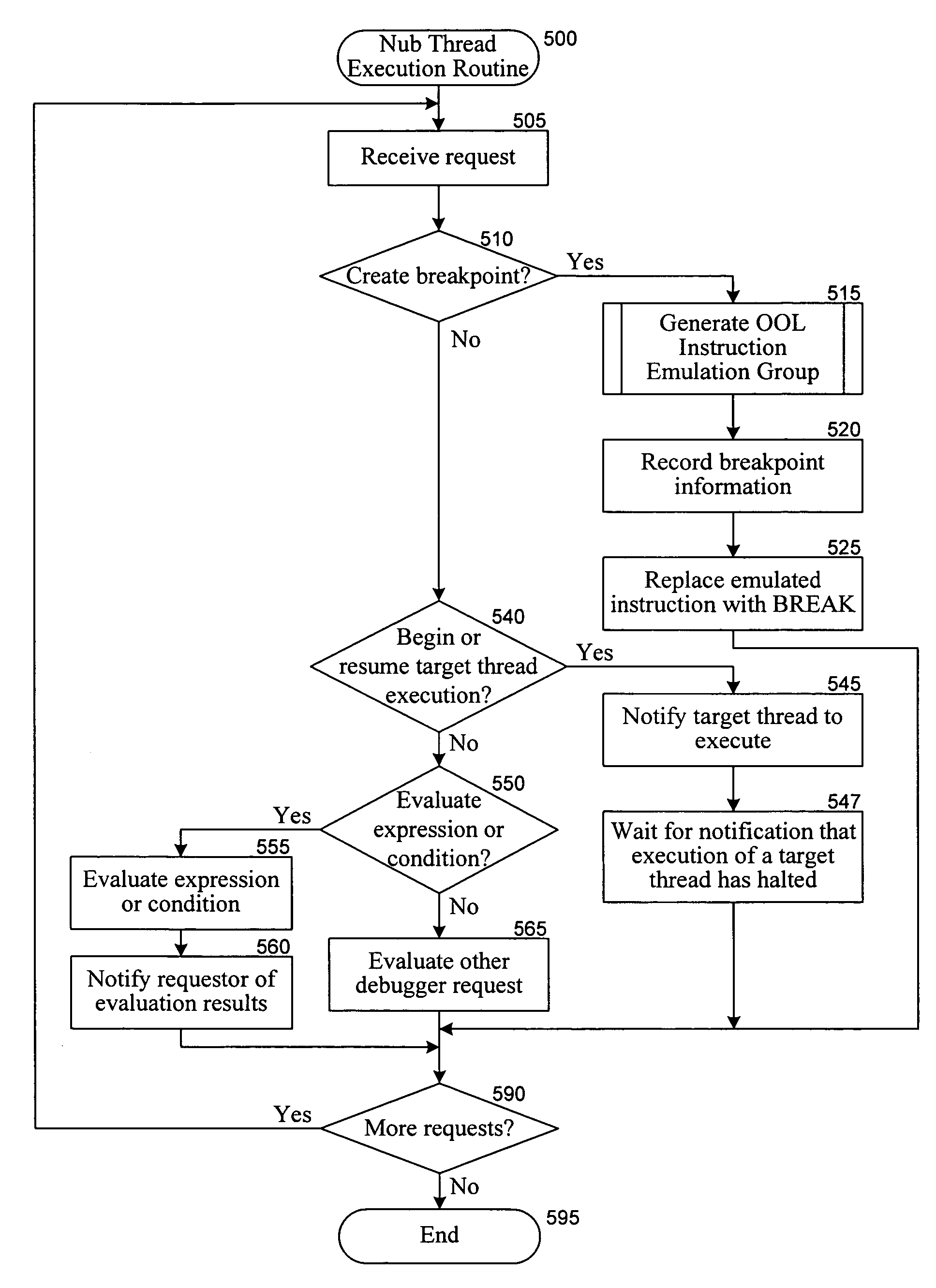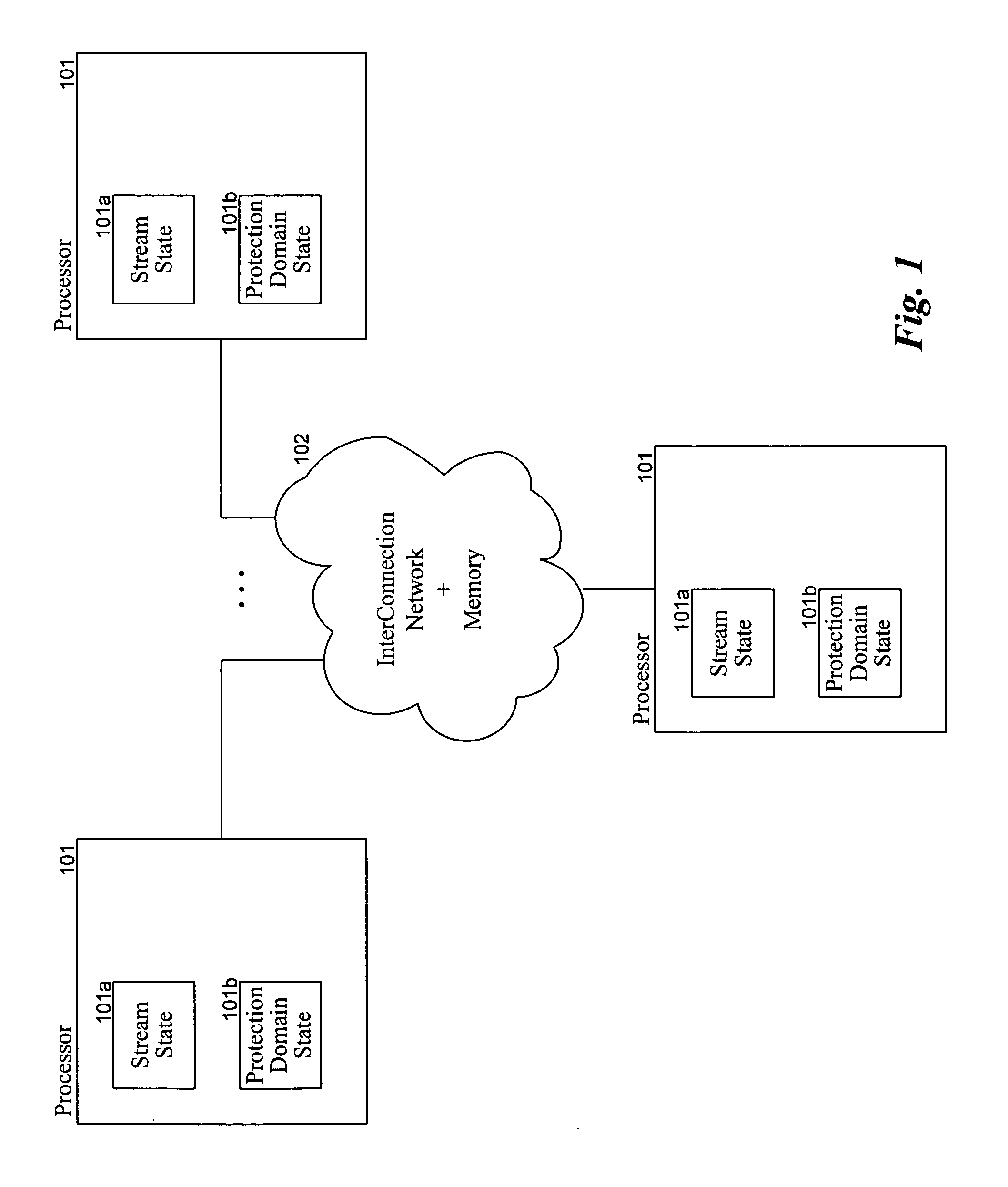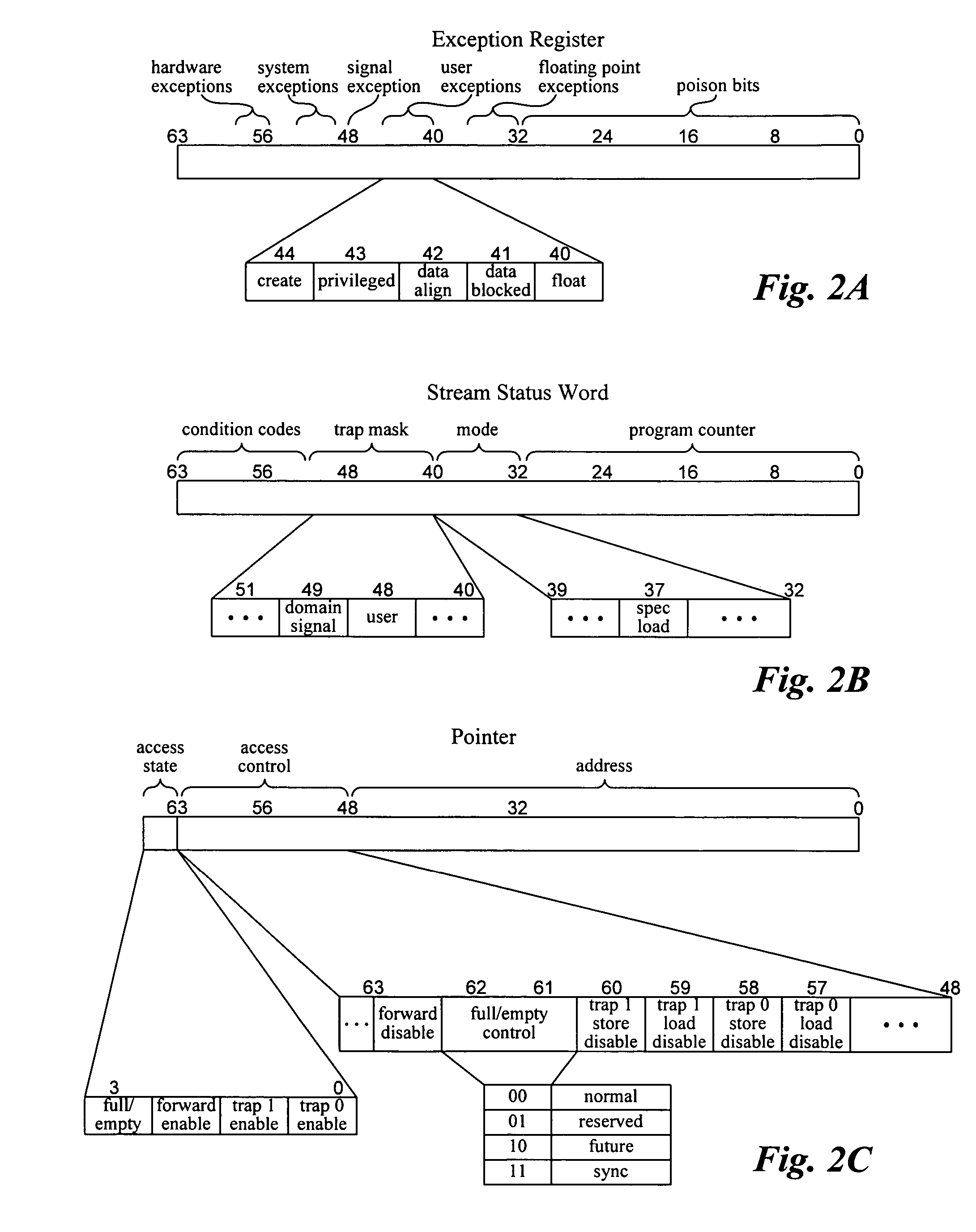Debugging techniques in a multithreaded environment
a multi-threaded environment and debugging technology, applied in the field of debugging techniques for computer systems, can solve the problems of inability to create, quit, and reserve streams, and the necessity of an exception is uncertain, and the operation of creating, quitting, and reserving streams is unprivileged
- Summary
- Abstract
- Description
- Claims
- Application Information
AI Technical Summary
Benefits of technology
Problems solved by technology
Method used
Image
Examples
Embodiment Construction
[0051]Embodiments of the present invention provide various techniques for debugging targets. In particular, the techniques include implementing breakpoints using Out-Of-Line (OOL) instruction emulation so that an instruction replaced with a breakpoint instruction does not need to be returned to its original location for execution, executing a debugger nub for each target as part of the target task but using a nub task thread for the nub execution that is separate from the target task threads (i.e., the threads executing target code), providing immunity from breakpoints for specified threads (e.g., the nub thread) via specialized breakpoint handlers used by those threads, and virtualizing the debugger nub such that a shared root nub provides a uniform interface between the debugger and the target while specialized nubs provide differing functionality based on the type of target being debugged.
[0052]FIG. 3 is a block diagram illustrating an embodiment of a debugger using techniques of...
PUM
 Login to View More
Login to View More Abstract
Description
Claims
Application Information
 Login to View More
Login to View More - R&D
- Intellectual Property
- Life Sciences
- Materials
- Tech Scout
- Unparalleled Data Quality
- Higher Quality Content
- 60% Fewer Hallucinations
Browse by: Latest US Patents, China's latest patents, Technical Efficacy Thesaurus, Application Domain, Technology Topic, Popular Technical Reports.
© 2025 PatSnap. All rights reserved.Legal|Privacy policy|Modern Slavery Act Transparency Statement|Sitemap|About US| Contact US: help@patsnap.com



